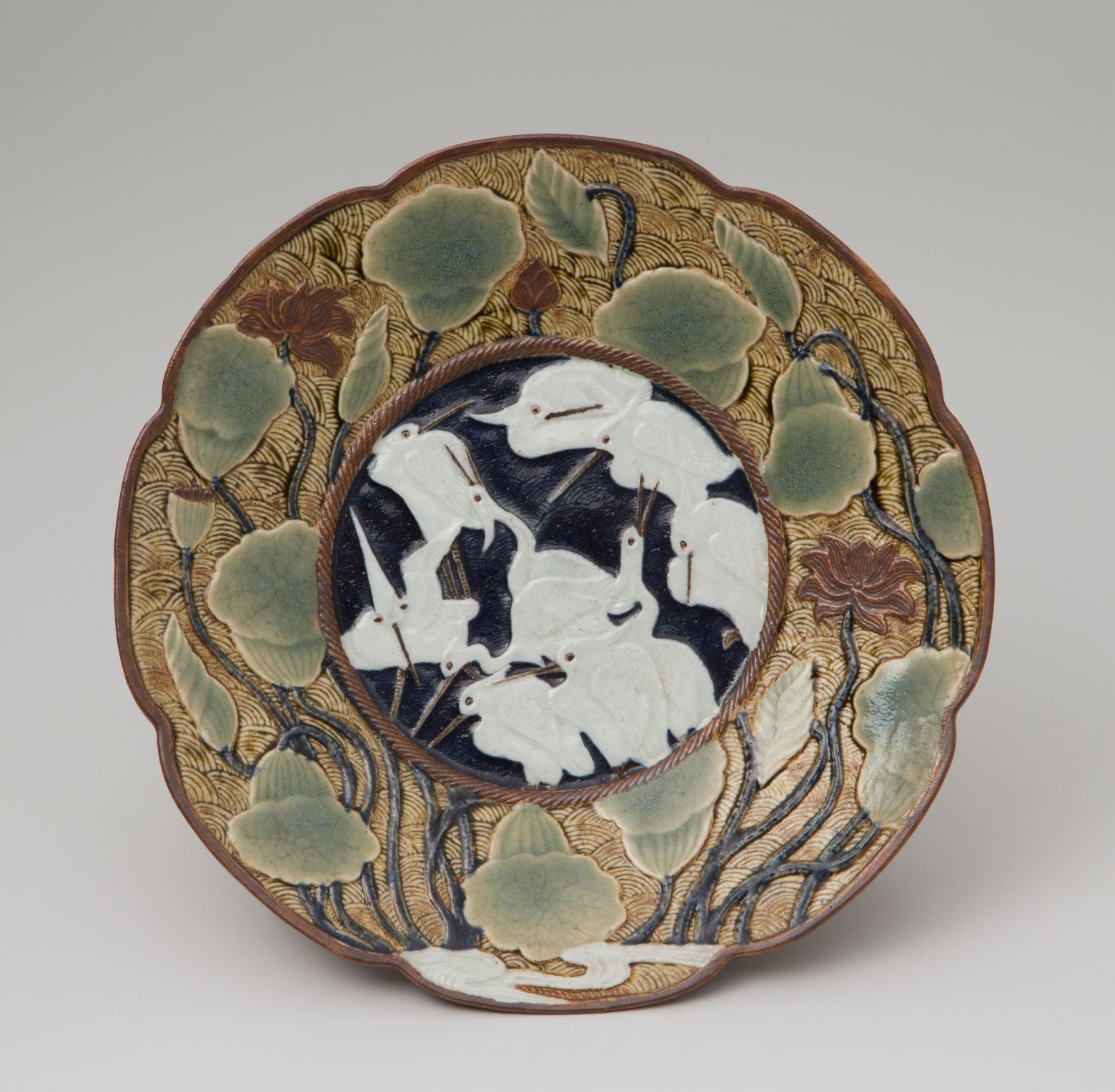In the beginning of 17th century, the first Japanese porcelain was created in Hizen Arita (present Arita-cho, Nishimatsuura-gun, Saga Prefecture). The porcelain produced in Hizen region (present day Saga and Nagasaki prefectures) was called “Imari ware” in the consumption markets since it was mainly shipped from Port Imari in Saga Prefecture to various places in the world.
While the early examples were following the designs of the precedent Chinese porcelain, Imari ware started gradually exploring more Japanese esthetics: a composition with a wide range of margins, motifs based on Japanese indigenous nature and landscape such as Mount Fuji and autumnal colors with a stream, and designs associated with the famous Japanese waka poetry. In the middle of 17th century the Dutch East India Company launched the overseas exports, and thus the elegant Kakiemon-styled and the gorgeous overglaze enameled and gold gilded (kinrande) Imari wares became to be used regularly among the European nobles and royals. Also in the domestic market, the demand of those luxurious porcelains increased at the end of 17th century among the tycoons accumulated the wealth through the economic growth. The official overseas export by the Dutch East India Company was terminated in the middle of 18th century and Imari ware enlarged its market domestically to be commonly used within the daily lifestyle of the townspeople who became the new leading class of culture. In the 19th century the townspeople’s culture reached the peak of prosperity and various types of elaborate dishes and bowls were used commonly in restaurants and inns in Edo as a feast for people’s eyes. The shapes and designs of Imari ware which have been updated along with the change of lifestyles and tastes are still fascinating people even today.
This exhibition introduces the selected works from Akihiko and Yūko Shibata’s vast collection of over 10,000 pieces of Imari ware which was donated to the Kyushu Ceramic Museum in Saga. Alongside the other masterpieces lent from the museum’s collection of a wide variation of shapes and designs of koimari (“Old Imari”: Imari ware which were produced during the Edo period) can be overviewed. Please enjoy the charm of koimari which shares the contemporary tastes of cuteness and stylishness through its bold composition, lively brushstrokes and novel designs.
